You (Might Not) Know These Fascinating Facts About the P-61
The distinctive Northrop P-61 Black Widow was the first operational American warplane designed from the ground up to be utilized as a night fighter and to be equipped with radar in a nose-mounted configuration. However, the aircraft was actually first conceived in 1940 as an answer to a plea from the Royal Air Force for an effective night fighter to combat the Luftwaffe running rampant over England by night.
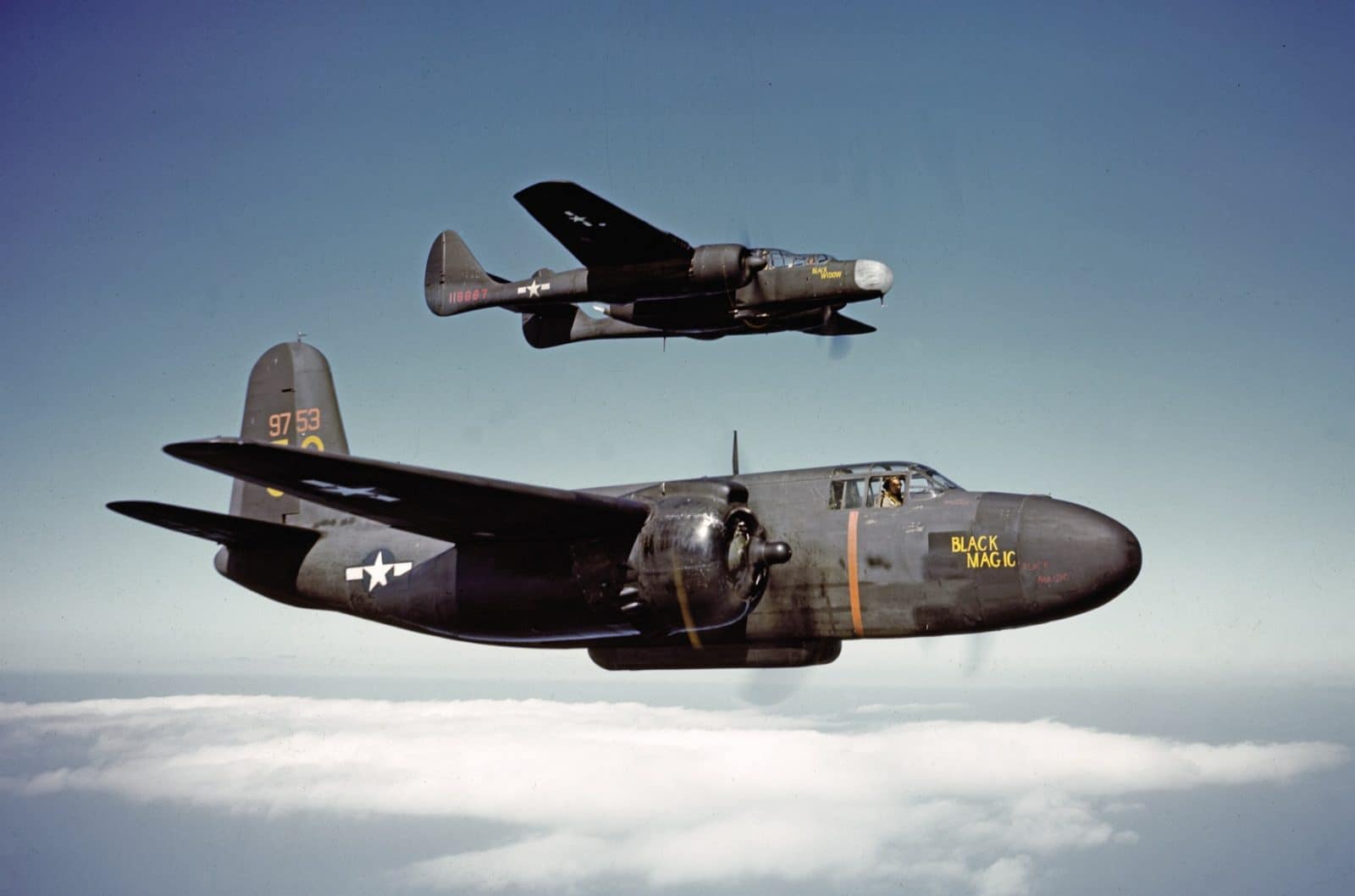
Firepower Built In
Black Widows were originally armed with four forward-firing Hispano M-2 20 millimeter cannons mounted in the lower central fuselage and four Browning M2 .50 caliber machine guns mounted in a remotely controlled central dorsal turret similar to those found on the Boeing B-29 Superfortress. In fact some P-61s did not receive their dorsal turrets because they were diverted to B-29 production.

Getting It Right Took Time
The design and evaluation process went through several armament location configurations before settling on the final production setup. The dorsal turret could be aimed and fired by the gunner or the radar operator. Because the turret caused buffeting of the tail control surfaces, in actual squadron use many Black Widows had their dorsal turrets removed. Some were removed to save weight and add fuel.
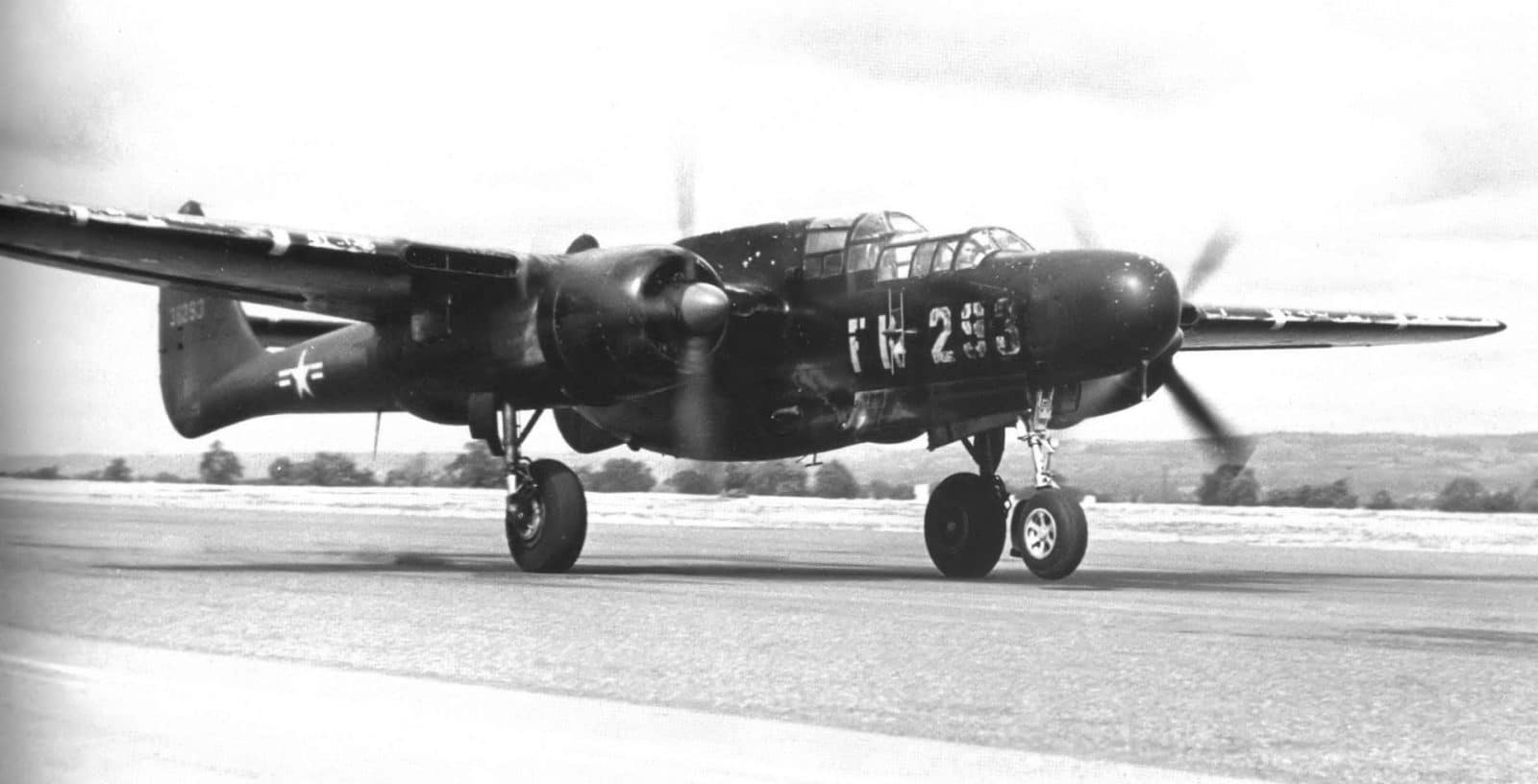
Size Matters
The P-61 was a very large aircraft- at more than 45 feet long and with a 66 foot wingspan, tilting the scales at more than 22,000 pounds empty, the Black Widow was far larger than any other fighter aircraft to enter Allied service and nearly as large as the medium bombers then in service.
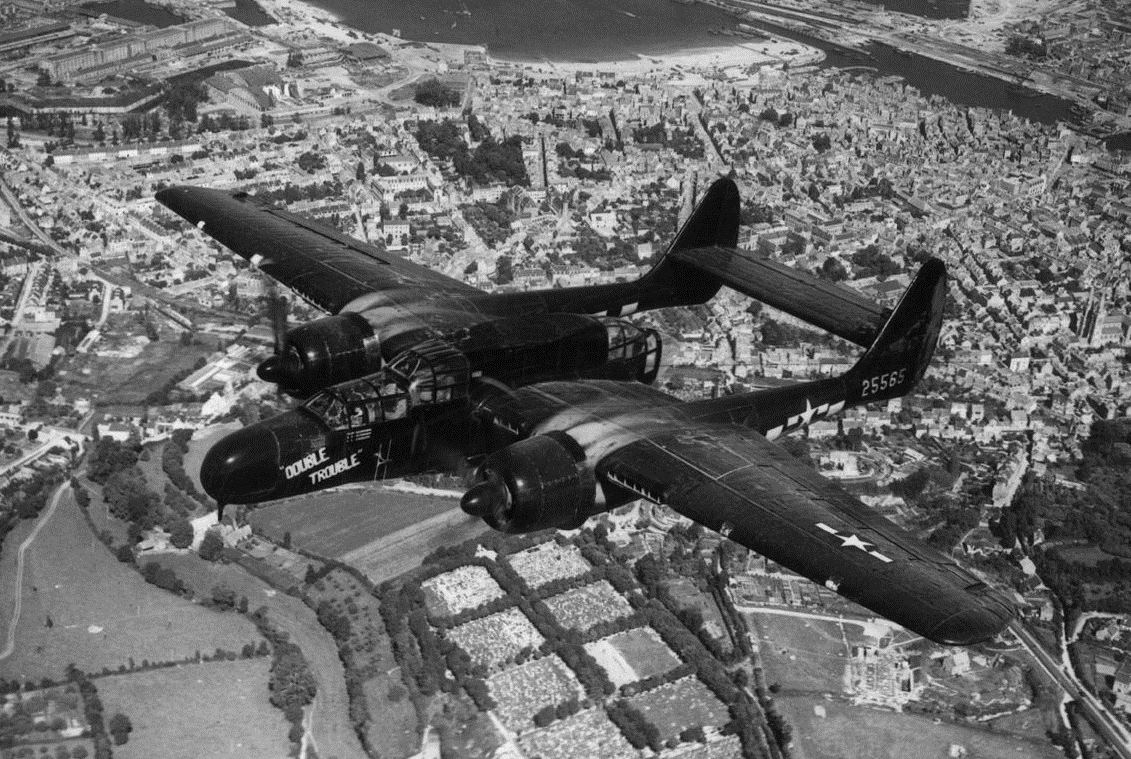
The Photo Flash
The F-15A Reporter was an unarmed photo reconnaissance version of the P-61C. A distinctive bubble canopy replaced the stepped up birdcage arrangement found on the P-61. Uprated Pratt & Whitney R-2800 Double Wasp engines turning paddle-bladed propellers powered the F-15A.
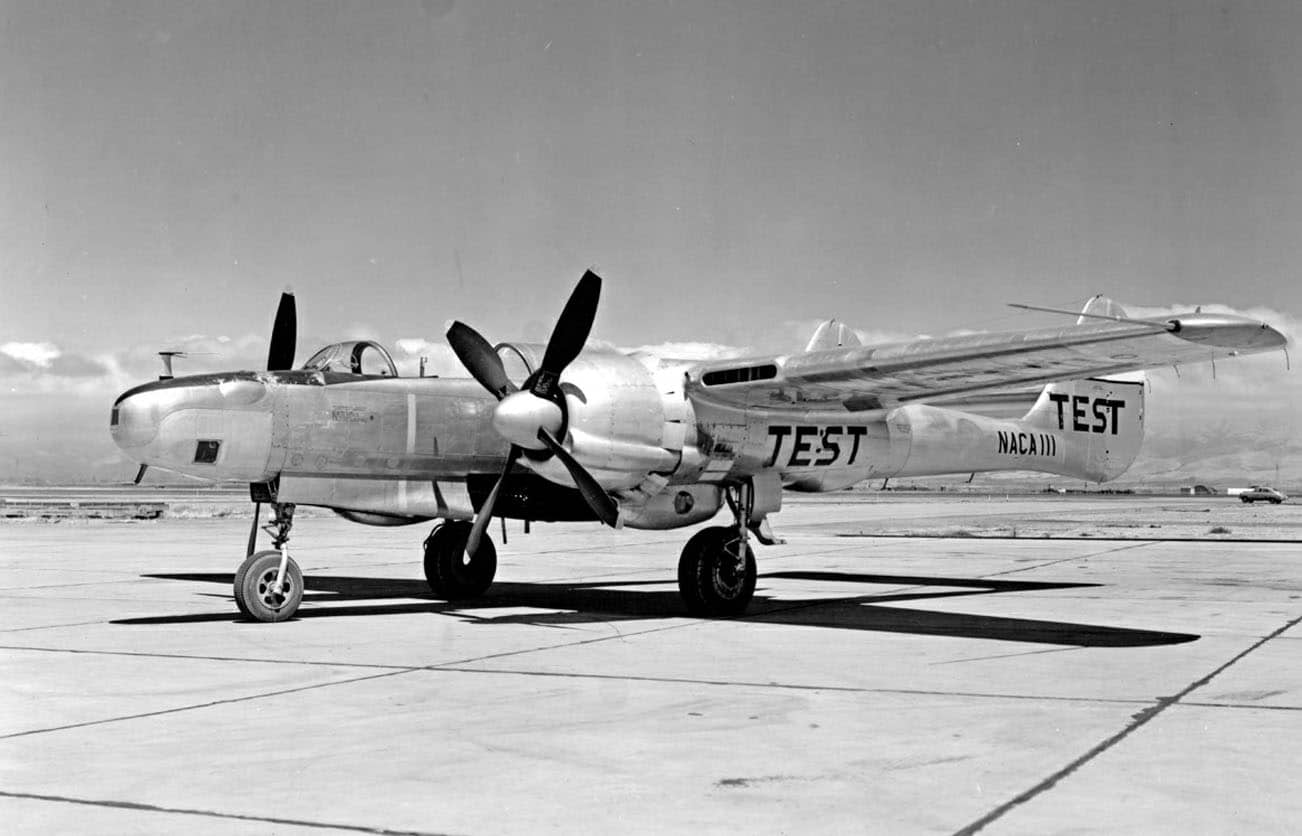
Wait…a Marine Corps Black Widow?
The Marine Corps intended to use the P-61 but backed out and chose the Grumman F7F Tigercat instead. That didn’t stop the Marines from using about a dozen P-61s (designated as F2T-1N) as radar trainer airframes for a couple of years until Tigercats became available to them in quantity.
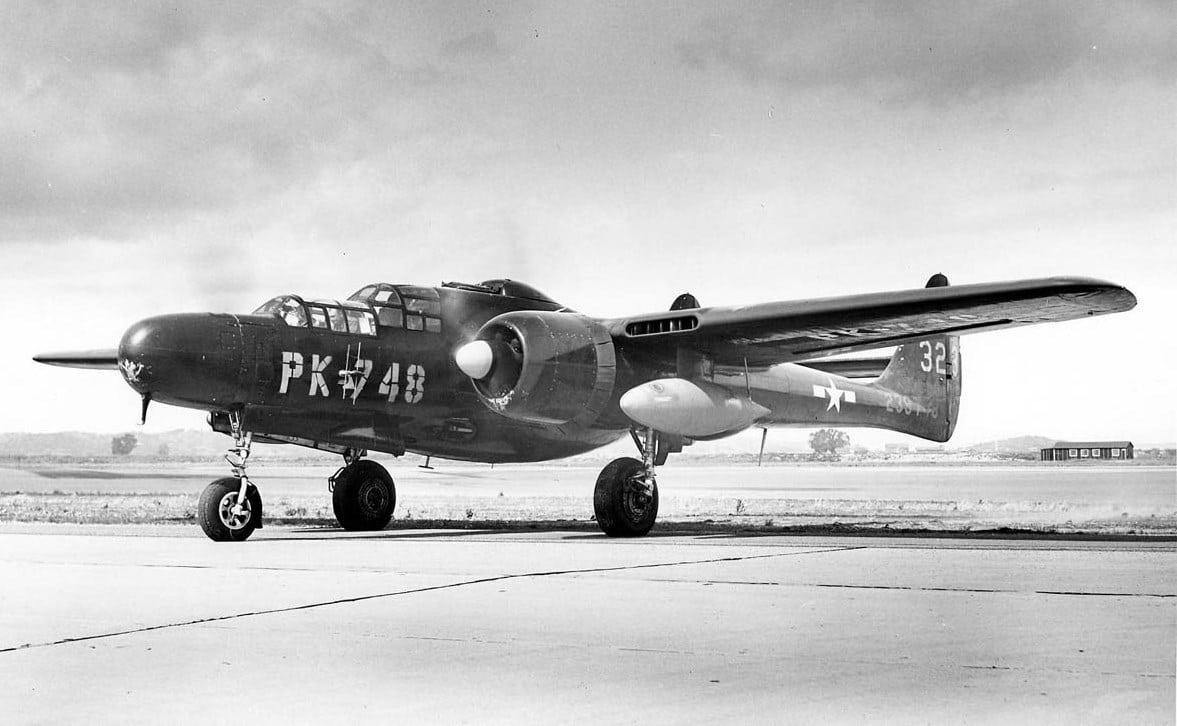
Aces and the Competition
After much back and forth with the RAF and comparisons between the P-61 and the de Havilland Mosquito Mk XVII night fighter variant, P-61s began flying operational missions in the European Theater of Operations (ETO) on July 15th 1944. The first Black Widow to score an aerial victory was a 422nd Night Fighter Squadron (NFS) Green Bats P-61 which shot down a German V-1 buzz bomb. Three ETO crews achieved ace status in P-61s.


My dad flew B17s with 381 BG. June 6 44 to Oct 44.
But my wife’s dad was USAAC weatherman / observer stationed in China 44-45. He flew in P61s daily to recon and report Allied bridge bombing results. His seat was in the rear facing blister designed for the radar operator…but his job replaced radar need. They were young men and almost nightly would tie one on with Chang Fang whiskey then, at 4am roll out of the sack, hungover, grab some chow, man the plane, immediately don oxygen masks and turn oxygen on to clear their heads while rolling down runway. The plane was so powerful that it could virtually rotate to near vertical climb as wheels went up. This left him hanging strapped in his swivel seat facing straight down at the ground…not always a pleasant feeling as the booze from the previous evening caused, uh, nausea. Once (he said) hed not tightened his seat harness fully and as the plane went vertically, he was suspended, face down, out of the seat when nausea went full throttle.
He ripped the oxygen mask off just as the chow…all of it, ejected and splattered all over the perspex blisters inner surface. When they’d reached altitude, leveled off and headed to their observation area, he had to crawl around and scrape breakfast off the blister so he could see below to make his report on the previous night’s bombing runs effectiveness. Aftwr that, he swore off Chang Fang for the durarion.
Picture show Double Trouble, Met pilot on several occasions as he lived in my home town of Grand Rapids Mi.